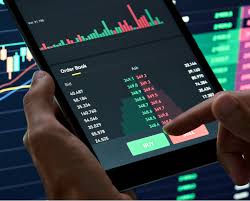
Understanding Trading Arbitrage Crypto
The cryptocurrency market is known for its volatility and rapid price movements, which creates various opportunities for traders. One of the most intriguing strategies employed by savvy traders is known as arbitrage. In this comprehensive guide, we will explore the ins and outs of trading arbitrage crypto, discussing what it is, how it works, and what you should consider before diving in. Additionally, you can check out this Trading Arbitrage Crypto https://www.carlagericke.com/category/blog/page/16/ for further insights.
What is Trading Arbitrage?
Trading arbitrage is a strategy that involves taking advantage of price discrepancies in different markets. In the context of cryptocurrency, it typically refers to buying a cryptocurrency at a lower price on one exchange and simultaneously selling it at a higher price on another exchange. This process allows traders to make profits with minimal risk, as the trades are executed almost instantly, reducing the exposure to market fluctuations.
How Does Cryptocurrency Arbitrage Work?
The mechanism of cryptocurrency arbitrage is relatively straightforward. Here’s a step-by-step breakdown of how it works:
- Identify Price Discrepancies: The first step is to monitor various cryptocurrency exchanges for price differences on the same asset. Tools like cryptocurrency price aggregators can help in tracking real-time prices across multiple platforms.
- Execute the Trades: Once you identify a price discrepancy, you would purchase the cryptocurrency on the exchange where it is cheaper and immediately sell it on the exchange where it is priced higher. Timing is critical in this step to ensure you capitalize on the price difference.
- Transfer and Withdraw: After completing the trades, you may need to transfer the cryptocurrency between exchanges, which can involve withdrawal and deposit fees. It’s essential to factor in these costs when calculating potential profits.
Types of Cryptocurrency Arbitrage

There are several types of arbitrage in cryptocurrency trading, each differing in strategy and execution:
1. Spatial Arbitrage
This is the most common form of arbitrage, involving different exchanges. Traders buy low on one exchange and sell high on another. This requires quick execution to truly benefit from the price difference.
2. Temporal Arbitrage
This occurs when a trader takes advantage of the price change of an asset over time. For example, if Bitcoin’s price tends to rise every evening, a trader might buy in the morning and sell in the evening on the same exchange.
3. Statistical Arbitrage
This method relies on complex mathematical models to identify profitable opportunities. Traders use algorithms to analyze price patterns and correlations between different cryptocurrencies or markets.

Tools for Arbitrage Trading
Successful arbitrage trading often depends on having the right tools at your disposal. Here are some essential tools that traders utilize:
- Price Aggregators: Websites or applications that provide real-time price data across multiple exchanges.
- Trading Bots: Automated software that can execute trades within milliseconds when arbitrage opportunities arise.
- Market Analysis Tools: Tools that help traders analyze market trends and historical data to make informed decisions.
Risks of Trading Arbitrage Crypto
While arbitrage can offer potentially lucrative opportunities, it’s essential to understand the risks involved:
- Market Risk: Cryptocurrency prices can be highly volatile, and the expected price difference may disappear within moments, leading to a potential loss.
- Transfer Times: The time taken to transfer cryptocurrencies between exchanges can be significant, resulting in missed opportunities.
- Fees: Transaction fees can eat into profits, especially if the price difference is marginal.
- Exchange Risk: Relying on multiple exchanges opens up risks such as outages, hacks, or regulatory issues that could affect the transaction.
Conclusion
Trading arbitrage in the cryptocurrency space is a compelling strategy that can yield profits if executed correctly. However, as with any trading strategy, it requires careful planning, quick execution, and an understanding of the associated risks. By effectively leveraging tools and continuously refining your approach, you can navigate the complexities of this market and uncover profitable arbitrage opportunities. Always remember to stay informed about market conditions and regulatory changes, as these factors can significantly impact your trading strategy.
